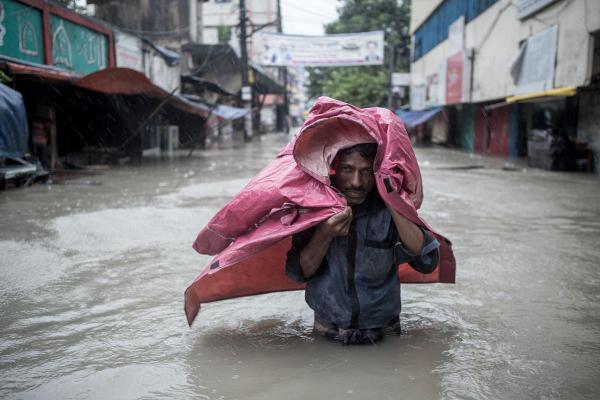The High Cost of Cheap Water
WWF report: water’s value equivalent to global 60% of GDP but remains chronically undervalued
10 Nov 2023 by The Water Diplomat

Released on World Food Day, the World Wildlife Fund’s (WWF) report entitled “The High Cost of Cheap Water” estimates the annual use value of water to the global economy at U.S. $ 58 trillion, or 60% of global Gross Domestic Product. The WWF estimates the direct economic benefits of water, such as water for households, agriculture and industry, at U.S. $ 7.5 trillion annually. However, the more indirect and ‘unseen’ benefits, such as water purification, carbon storage, and defense against extreme floods and droughts are more that seven times higher at U.S. $50 trillion annually.
In principle, the WWF argues, the value of water to societies, economies and ecosystems is infinite: water provides benefits to us through our consumption and use, but healthy water ecosystems also provide indirect benefits such as water purification and flood regulation. Some values, such as the value of water in maintaining biodiversity, and its value in our religious and cultural practices, are impossible to classify in economic terms. However, the report emphasises that it is important to place a greater value on healthy ecosystems, as the degradation of rivers, lakes, wetlands and groundwater aquifers is putting this value at risk and threatening climate resilience. Political momentum around the valuation of water is increasing, especially since water and rivers have been mentioned mentioned for the first time in the United Nations Climate Change Conference (COP 27) cover text. Businesses are also starting to change their behaviours as they experience water risks first-hand and acknowledge the importance of water risk management for their financial resilience. Financial institutions are also becoming aware of the freshwater crisis and are responding with new risk management mechanisms and innovative instruments to bridge the water financing gap.
Despite the methodological difficulties, the report attempts to put a number to the value of water. It does so by focusing on the direct and indirect use values of freshwater that can be quantified. It therefore provides the disclaimer that the end result of the calculation - U.S. 58 trillion - is actually an underestimate of the infinite value provided to society. What can be calculated in monetary terms is firstly the direct use value of redirecting water from ecosystems to supply water for household, industrial and agricultural purposes, recreation, freshwater fishing, and hydropower generation. Secondly, it Is possible to calculate the indirect use value of water by making use of ‘ecosystem services’ such as water purification, flood regulation, carbon sequestration, etcetera.
Under each category, the calculation proceeds by looking into three different sub categories of direct and indirect water use values. For instance, within the category of direct use value, there is a sub category dedicated to ‘consumptive industries’. These include households and municipalities, agricultural water withdrawals, and industrial water withdrawals. For each of these categories it is possible to estimate the average value of water per cubic metre. By summing up the values obtained under all these categories, it is possible to ultimately reach the total contribution to world GDP that water offers. The method is referred to as a Total Economic Value (TAV) framework, and has the great advantage that it provides a comprehensive view of the economic use value of freshwater resources.
As the authors mention, there are of course limitations to an attempt like this. However, the key objective of the report is not to provide an estimate of water’s value that is undisputed. Rather, the report seeks to argue that water is currently undervalued, and that this lack of valuation of water is coming at an immense cost. He world, the report states, is “facing a pervasive and worsening water crisis that is undermining human and planetary health. Billions of people still lack access to safe water and sanitation, food insecurity is rising, water risks to agriculture and industry are escalating, and we are losing freshwater species and ecosystems at alarming rates. Growing populations, economies and urbanisation are putting additional pressure on water supplies and freshwater ecosystems – as climate change drastically disrupts the world’s hydrological system. It is by providing more clarity on the real costs of undervaluing our freshwater resources that the WWF hopes to inform decision makers to shift towards more sustainable forms of water governance.
The report is simultaneously a call to action, with a detailed list of proposed actions for governments and policymakers, industry and business, financial institutions, civil society organisations and individuals. At the heart of these actions is the need to protect and restore healthy rivers, lakes, wetlands and aquifers and to fundamentally change the way in which we value and invest in water and freshwater ecosystems.
